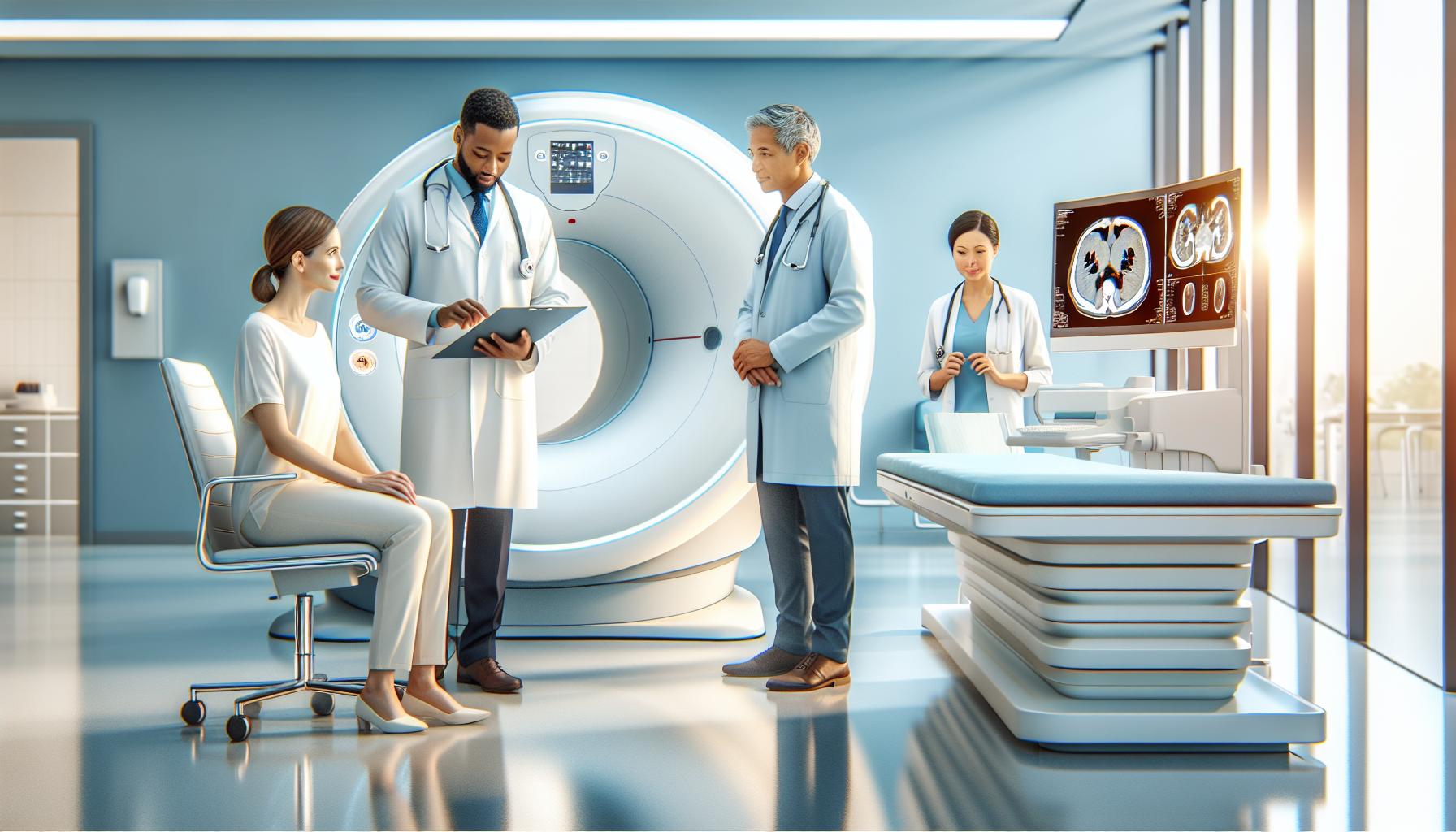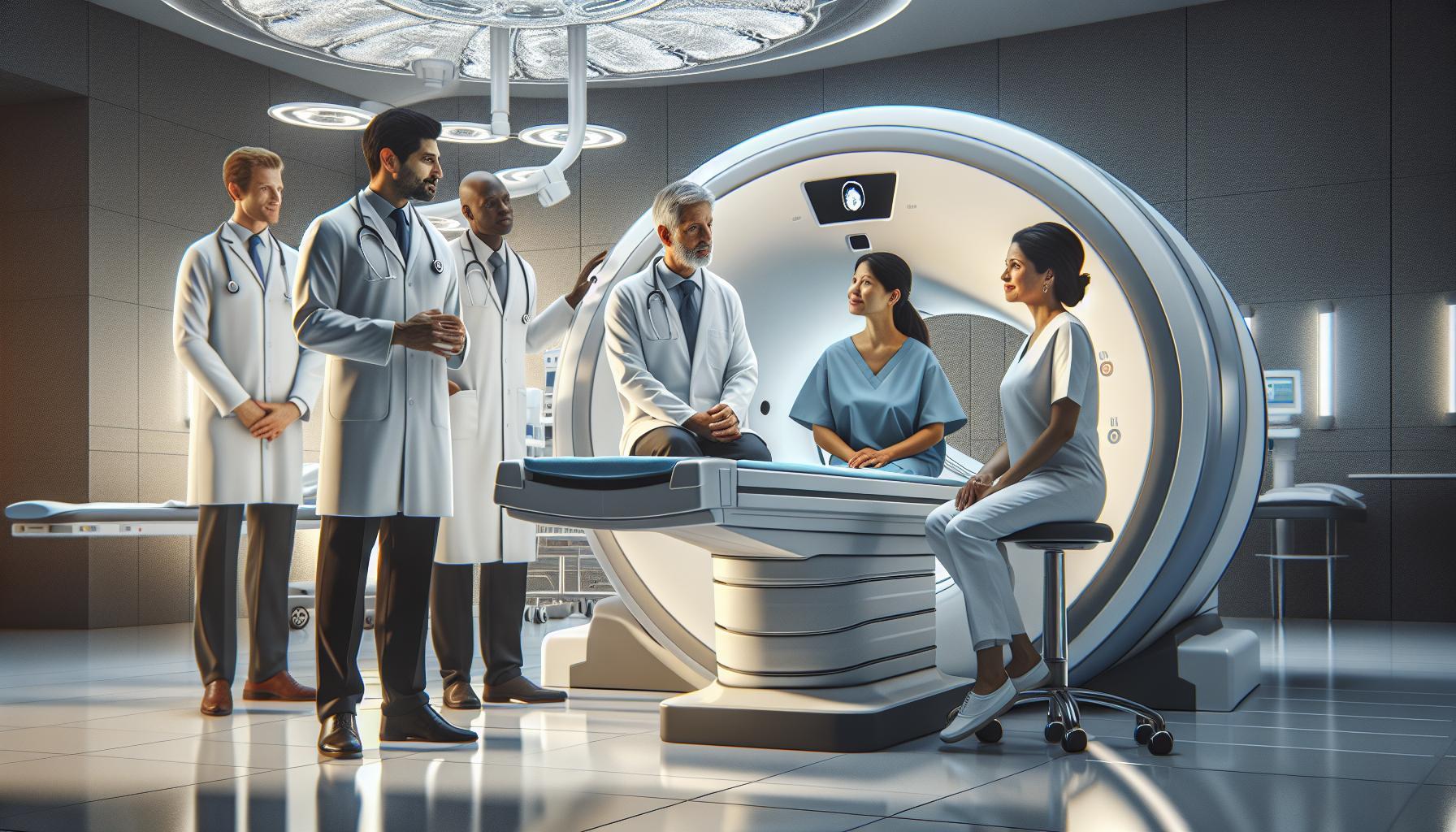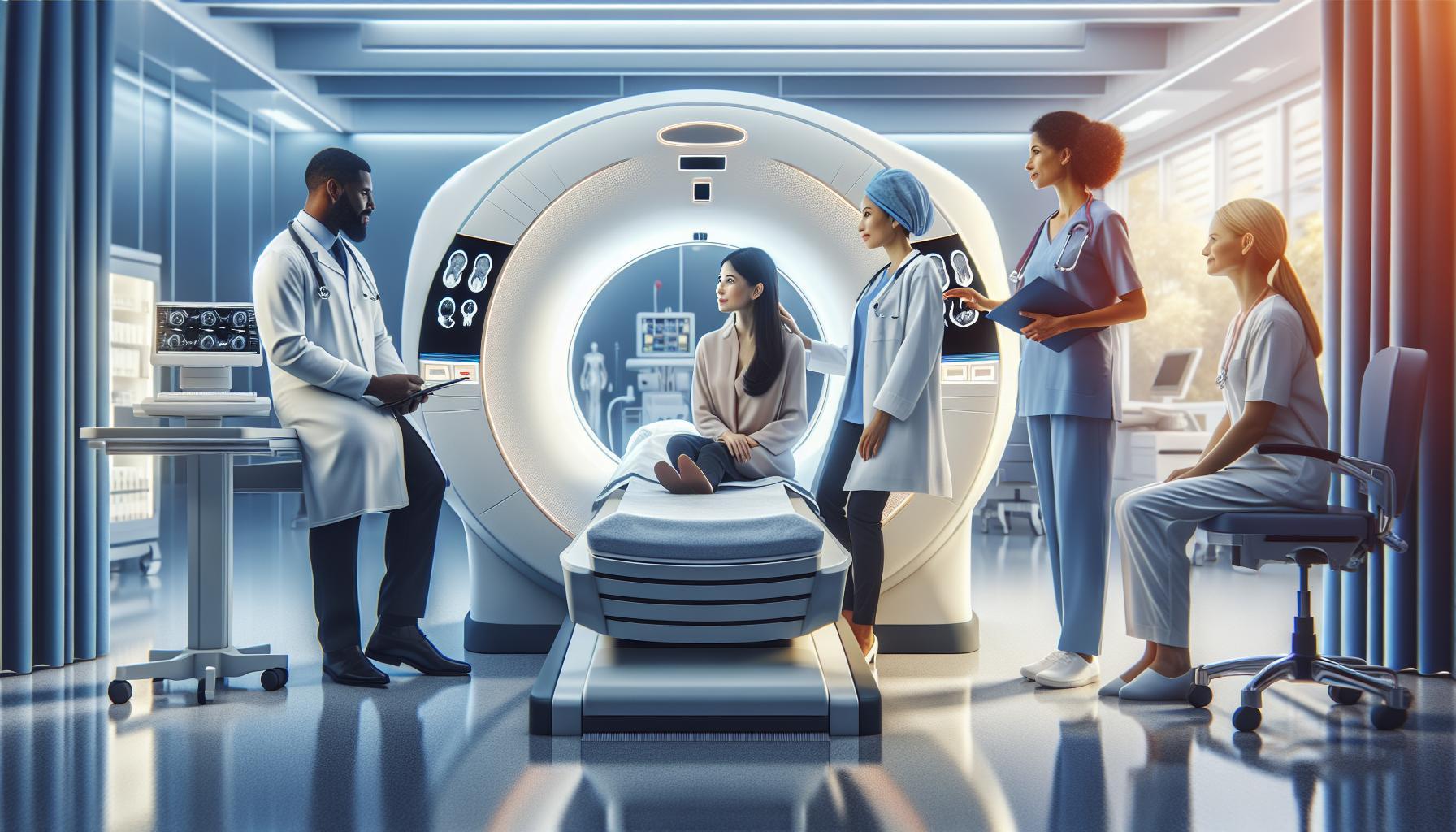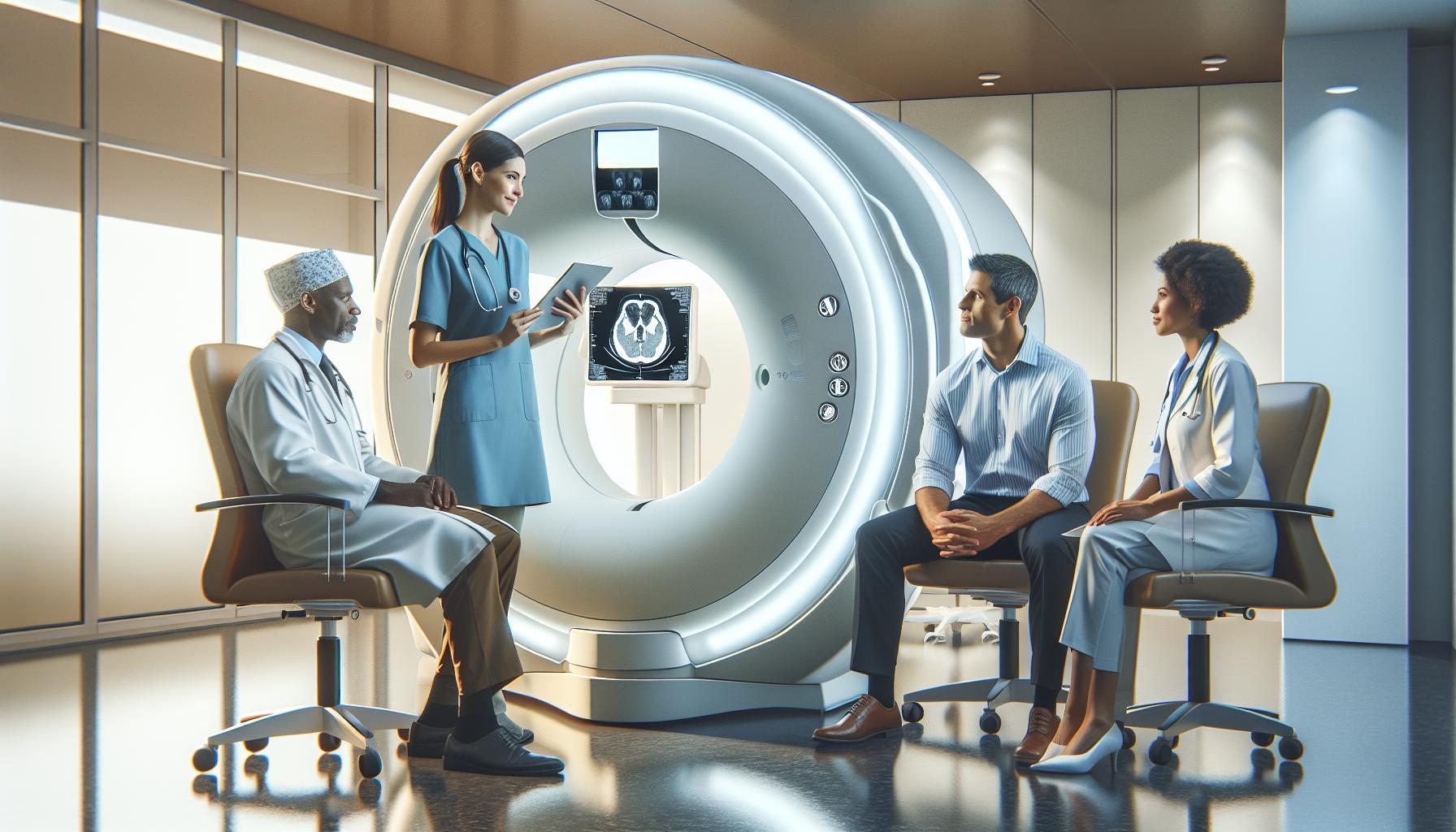Did you know that diverticulitis affects millions of people, often leading to severe abdominal pain and complications? Understanding how diagnostic tools like CT scans can reveal this condition is crucial for effective treatment. A CT scan is the gold standard in assessing diverticulitis, providing clear images that help doctors determine the severity and guide treatment plans.
For those experiencing symptoms such as bloating, pain, or changes in bowel habits, a timely diagnosis can make all the difference. You might be wondering how a simple imaging procedure can shed light on such a complex issue. This article will delve into the remarkable diagnostic power of CT scans, offering insights into how they work, what to expect during the procedure, and their significance in managing diverticulitis effectively. Let’s explore this vital medical imaging technique and discover how it can aid you or your loved ones in navigating the challenges posed by diverticulitis.
Understanding Diverticulitis: Symptoms and Risks
Diverticulitis, a condition characterized by the inflammation of the diverticula-small pouches that can form in the intestinal walls-can lead to significant discomfort and complications if not addressed promptly. Common symptoms of diverticulitis include abdominal pain, often localized to the lower left side, fever, changes in bowel habits, such as diarrhea or constipation, and nausea. It’s important to recognize these symptoms early, as they can escalate into more serious issues like abscesses, perforations, or peritonitis if left untreated.
The risks associated with diverticulitis are influenced by several factors, including diet, lifestyle, and genetics. A diet low in fiber is commonly linked to the development of diverticular disease. Furthermore, individuals over the age of 40, those who are sedentary, and those who smoke are at higher risk. Understanding these factors is crucial, as they can inform both preventative measures and treatment strategies. For instance, increasing fiber intake through fruits, vegetables, and whole grains is often recommended to reduce the risk of diverticular complications and promote overall bowel health.
In helping patients navigate their experiences with diverticulitis, it’s vital to create a supportive environment that addresses both physical and emotional aspects. Being aware of symptoms and understanding potential risks empowers individuals to seek medical assistance promptly, leading to better management of their condition and, ultimately, an improved quality of life. Additionally, engaging in open discussions with healthcare providers about symptoms, risks, and management strategies can enhance patient outcomes and foster a proactive approach to health.
How CT Scans Diagnose Diverticulitis Effectively
CT scans, or computed tomography scans, serve as a critical tool in diagnosing diverticulitis, providing clear images that allow healthcare professionals to assess the condition accurately. These scans utilize X-ray technology in conjunction with computer processing to generate detailed cross-sectional images of the abdomen, which are instrumental in revealing not only the presence of diverticula but also any inflammation or complications that may have arisen, such as abscesses or perforation.
One of the standout features of CT scans in diagnosing diverticulitis is their ability to provide highly detailed images in a matter of minutes. This rapid imaging is invaluable, especially in acute situations where timely diagnosis can lead to the appropriate management of the condition. The images produced highlight the bowel’s structure, showing the diverticula’s size, location, and any surrounding inflammation. In many cases, a contrast dye may be injected intravenously to enhance visibility, allowing for even clearer differentiation between healthy and affected tissues.
Preparation for a CT scan can help ease patient anxiety and ensure the procedure goes smoothly. Patients are typically advised to refrain from eating for a few hours beforehand and may need to drink a contrast solution, which helps to highlight the intestinal tract on the images. Understanding that these preparations are designed to optimize the scan’s effectiveness can provide reassurance. Most patients will find that the process is quick and comfortable, with minimal discomfort involved.
Once completed, the CT scan results are analyzed by a radiologist, who will provide a report to the treating physician. This report includes detailed information on the presence of diverticulitis and any potential complications. It is essential for patients to have follow-up discussions with their healthcare provider about the results, as this ensures they receive personalized advice regarding treatment options and further management of their diverticulitis. Engaging in this dialogue can empower patients, providing them with a sense of control and understanding over their health journey.
The Role of Imaging in Diverticulitis Assessment
Imaging plays a pivotal role in accurately diagnosing and assessing diverticulitis, a condition that can cause significant abdominal pain and complications when diverticula (small pouches) in the colon become inflamed or infected. Among the various imaging modalities available, CT (computed tomography) scans have emerged as the gold standard for identifying and evaluating diverticulitis. These scans are particularly valuable because they provide intricate cross-sectional images of the abdomen, enabling healthcare providers to visualize not just the diverticula but also any associated complications such as abscesses or perforation.
The effectiveness of CT scans lies in their ability to capture detailed and rapid images. This is especially crucial during acute presentations of diverticulitis, where timely intervention can prevent serious health issues. When a patient undergoes a CT scan, they often receive a contrast dye that enhances the visibility of structures within the abdomen. This helps delineate the healthy tissue from inflamed areas, allowing for an accurate assessment of the severity and extent of the disease. By quickly identifying these key factors, healthcare professionals can initiate appropriate treatment plans, be it medical management or, in more severe cases, surgical intervention.
For patients, understanding the significance of imaging in their assessment can alleviate anxiety surrounding the diagnosis. Many may wonder what to expect during the imaging process. Preparing for a CT scan typically involves dietary restrictions and potentially drinking a special contrast solution to ensure optimal imaging results. Knowing this can provide reassurance that these steps are designed to enhance the scan’s effectiveness and overall experience. It’s also essential for patients to engage with their healthcare providers post-scan to discuss findings and understand their implications for treatment, empowering them in their health journey.
In summary, the role of imaging-particularly CT scans-in the assessment of diverticulitis cannot be overstated. It not only facilitates a precise diagnosis but also aids in managing the disease effectively. By approaching this process with knowledge and preparation, patients can navigate their diagnostic journey with confidence, ensuring they are well-informed and active participants in their healthcare decisions.
Preparing for Your CT Scan: A Patient’s Guide
Preparing for a CT scan can seem daunting, but understanding the steps involved can help alleviate any anxiety. When it comes to diagnosing conditions like diverticulitis, a CT scan provides detailed images of the abdomen, allowing doctors to identify inflamed or infected diverticula effectively. As you prepare for this important diagnostic tool, knowing what to expect can empower you and ease any concerns.
Before your CT scan, your healthcare provider will typically give you specific instructions to enhance the clarity of the images. These may include dietary adjustments, such as:
- A clear liquid diet for 24 hours before the scan
- Avoiding solid foods
- Drinking plenty of water to stay hydrated
You may also be asked to refrain from certain medications or supplements, particularly those that could affect your digestive system. Following these guidelines is crucial, as it helps ensure that the images produced will be as accurate as possible, allowing your doctor to make informed decisions about your care.
On the day of the scan, expect to arrive at the imaging center or hospital with some time to spare. Wearing comfortable clothing without metal fasteners is advisable, as metal can interfere with the CT imaging process. Upon arrival, you might need to fill out some paperwork and then change into a gown. A healthcare professional will guide you through the procedure, explaining each step, including the use of contrast dye, which enhances visibility of the abdominal organs.
Understanding the process and preparing adequately can help make your CT scan experience smoother and less stressful. Always remember to communicate openly with your healthcare provider about any concerns or questions, ensuring that you feel confident and informed every step of the way.
Cost Breakdown: What to Expect for CT Scans
Understanding the potential costs associated with a CT scan is crucial for managing your healthcare expenses. The price of a CT scan can vary widely based on several factors, including the facility’s location, whether the scan is part of an outpatient service, and the specific type of CT scan being performed. Generally, patients can expect to pay anywhere from $300 to $3,000, depending on these variables. It’s essential to consult your healthcare provider and health insurance company to get a clearer picture of what to anticipate financially.
For those with health insurance, the out-of-pocket cost will largely depend on your plan’s coverage policy. Typically, your insurance may cover a substantial portion of the expense; however, you might still encounter costs related to co-pays, deductibles, or services deemed non-essential by your insurer. Before scheduling a CT scan, it may be helpful to reach out to the billing department of the facility where you plan to have the scan performed. They can provide an estimate of the total charges and inform you about payment plans if needed.
Factors Influencing CT Scan Costs
Several elements can impact the overall cost of your CT scan:
- Type of Scan: Different types of CT scans, such as abdominal or pelvic scans, may incur varied costs.
- Facility Type: Scans done in hospitals may be more expensive compared to outpatient imaging centers.
- Location: Geographical differences can lead to significant price fluctuations. Urban locations often have higher costs.
- Contrast Material: If a contrast medium is used for enhanced imaging, this may add to the overall price.
Cost can be a significant concern when considering medical imaging; hence, being proactive can help mitigate anxiety. Many facilities offer financial assistance programs for patients who find costs burdensome. If you find yourself overwhelmed by costs, discussing your options with a patient advocate may provide solutions tailored to your financial situation. Always prioritize open communication with your healthcare provider regarding any concerns related to cost and diagnosis to ensure that you are well-informed and prepared for your upcoming CT scan.
Safety Measures: Are CT Scans Risky?
While CT scans are invaluable for diagnosing various medical conditions, including diverticulitis, understanding their associated risks can help alleviate patient concerns. One of the most significant considerations is the use of radiation. CT scans do expose patients to a higher level of radiation than standard X-rays, which raises questions about safety and long-term effects. The risk from a single CT scan is relatively low and is deemed acceptable when weighed against the diagnostic benefits, particularly in urgent situations like suspected diverticulitis where timely diagnosis is critical for effective management.
To mitigate any potential risks, imaging facilities follow strict safety protocols. This includes optimizing scan settings to use the lowest radiation dose necessary for achieving clear images. Patients can further contribute to their safety by providing their healthcare team with a thorough medical history, including any previous imaging studies. This information can help the medical team assess cumulative radiation exposure and decide on the most appropriate diagnostic approach.
It’s also essential for patients to discuss any concerns they might have regarding their individual risks. Open communication with healthcare providers can demystify the procedure and empower patients. Those with previous conditions or other health concerns should remain proactive in inquiring about alternative imaging options if needed, such as ultrasound or MRI, which do not use ionizing radiation.
Ultimately, while there are inherent risks associated with CT scans, healthcare providers prioritize patient safety by employing protocols designed to minimize exposure. Understanding these measures can ease anxiety and provide a sense of reassurance when facing diagnostic procedures. Always remember, if you have specific concerns about your health or safety during this process, consulting your healthcare provider will equip you with personalized insights tailored to your situation.
Interpreting CT Scan Results for Diverticulitis
When a CT scan is performed to assess suspected diverticulitis, understanding the results is essential for effective treatment and management. These scans produce detailed cross-sectional images of the abdomen, allowing healthcare professionals to identify inflammation, abscesses, or complications related to diverticulitis. A clear interpretation hinges on recognizing specific indicators visible in the images, such as thickened bowel walls, diverticula, and surrounding fat stranding, which can point to inflammation.
What to Look For in CT Scan Results
When , physicians focus on several key features:
- Thickened Bowel Walls: Inflammation often causes the walls of the affected segment of the colon to thicken-typically a prominent sign of diverticulitis.
- Presence of Diverticula: These small pouches formed in the bowel wall can be easily identified on a CT scan.
- Fat Stranding: Increased density of fat surrounding the colon may indicate inflammation.
- Abscess Formation: Fluid collections around the intestinal tract can represent complications that may require further intervention.
It’s important to note that not every finding means diverticulitis is present; healthcare providers integrate CT results with clinical symptoms and history for an accurate diagnosis.
Next Steps After Receiving Results
Once you have your results, discuss them with your healthcare provider, who can explain what they mean for your health. They may suggest the following:
- If diverticulitis is confirmed, treatments may include antibiotics, dietary adjustments, or, in severe cases, surgery.
- Regular follow-ups or additional imaging might be recommended to monitor the condition over time.
- In cases where complications arise, more immediate treatment strategies may be necessary.
Having a comprehensive understanding of your CT scan results enables you to engage proactively in your health care. Don’t hesitate to ask questions about any unfamiliar terms or procedures; patient education is a crucial part of effective health management.
Comparing CT Scans with Other Imaging Techniques
When assessing diverticulitis, it’s essential to understand how CT scans compare to other imaging modalities. CT scans are often considered the gold standard due to their ability to provide detailed, cross-sectional images of the abdomen. However, alternative imaging methods, such as ultrasound and MRI, have their own roles and advantages in the diagnostic process.
Ultrasound can be particularly beneficial in evaluating diverticulitis, especially in certain populations like pregnant women, where radiation exposure is a concern. It utilizes sound waves to create images and can show bowel thickening or inflammatory changes. While ultrasound may not be as sensitive as CT in detecting complications like abscesses, it is a non-invasive option with no radiation risk. This advantage makes it appealing, although it can be operator-dependent, meaning the quality and interpretability of results may vary significantly based on the technician’s expertise.
MRI, meanwhile, is another alternative that provides excellent soft tissue contrast and is also free of ionizing radiation. It can be particularly useful in complex cases, such as those involving the pelvis or in patients where radiation exposure needs to be minimized. However, MRIs tend to be more expensive and less available than CT scans. Additionally, the duration of the scan can be longer and may require the patient to remain still for an extended period, which can be challenging for some individuals.
In summary, while CT scans are highly effective in diagnosing diverticulitis, understanding the strengths and limitations of other imaging techniques is crucial. Each modality contributes unique benefits, and your healthcare provider will select the most appropriate imaging based on individual circumstances, which may include your medical history, the extent of symptoms, and any specific concerns regarding radiation exposure. Always engage in open discussions with your healthcare provider about the best diagnostic approach for your personal health needs.
Real Patient Experiences: Navigating CT Scans
Experiencing a CT scan can be daunting, particularly when it relates to understanding a condition like diverticulitis. Many patients have shared their journeys, highlighting both the anxiety of the unknown and the relief once the process is over. For some, the anticipation leading up to the scan can feel overwhelming. It’s not uncommon to wonder about the sounds of the machine, the duration of the procedure, or even the significance of the results. Knowing what to expect can ease these concerns.
Several patients have reported that prior preparation significantly contributed to a smoother experience. Here are some practical steps and insights:
- Preparation is Key: Many found that following their healthcare provider’s pre-scan instructions regarding diet and hydration immensely improved their comfort during the scan, aiding in better imaging results.
- Bring Support: Having a trusted companion can be helpful. Patients have mentioned that just having someone to talk to or wait with can distract from any feelings of anxiety.
- Understanding the Procedure: Familiarizing oneself with the CT scan process-like the fact that you may need to lie still for a short period while the scan is conducted-can alleviate fear. Hearing from others about their experiences can also provide peace of mind.
- Ask Questions: Patients emphasized the importance of communicating with the staff about their concerns. Healthcare workers are there to help, and knowing they can address your questions can be reassuring.
Once the scan is complete, many patients share a sense of relief and anticipation about the results. They experience gratitude for the diagnostic power of CT imaging, knowing it plays a crucial role in monitoring the potential complications associated with diverticulitis. Remember, while navigating this process may feel challenging, support is always available from healthcare professionals. Engaging in discussions about your results and treatment options is essential for your peace of mind and well-being.
When to Seek Medical Attention for Diverticulitis
Recognizing the signs of diverticulitis early can be crucial in managing your health effectively. If you experience symptoms such as severe abdominal pain, particularly in the lower left side, fever, nausea, or changes in your bowel habits like constipation or diarrhea, it’s vital to seek medical attention. These could indicate that diverticulitis is worsening or leading to complications, such as an abscess or perforation of the intestinal wall.
In addition to the common symptoms, keep an eye on any sudden, acute changes in your condition. For instance, if you notice a significant increase in pain intensity, the development of bloody stools, or persistent vomiting, don’t hesitate to consult your healthcare provider. These signs may suggest a more serious underlying issue that requires prompt intervention.
It’s also important to be proactive about follow-up care, especially if you have previously been diagnosed with diverticulitis. Regular check-ups can help monitor your condition and any potential changes that may require treatment adjustments. If you have a history of diverticular disease, communicating any new or worsening symptoms to your doctor can help prevent further complications.
If you’re ever in doubt about whether to seek help, remember: it’s always better to err on the side of caution. Your healthcare team is there to provide support and guidance, so don’t hesitate to reach out. Being informed and vigilant about your symptoms can make a significant difference in your long-term health management.
Long-term Management and Treatment Options
Long-term management of diverticulitis focuses on reducing recurrence and preventing complications, while ensuring a high quality of life for patients. Acknowledging that dietary adjustments play a critical role can empower individuals in their journey toward better gut health. Research indicates that 75% of patients who experience one attack can manage their condition through dietary changes alone. Incorporating high-fiber foods, such as fruits, vegetables, legumes, and whole grains, into daily meals can significantly aid in preventing future episodes and promoting regular bowel movements. However, certain foods should be approached with caution, including nuts, seeds, and foods that can irritate the digestive system.
Regular follow-up appointments are equally essential in long-term management. These visits allow healthcare providers to monitor your condition, adjust treatments, and provide guidance on lifestyle modifications. In some cases, your doctor might recommend a colonoscopy as a preventive measure, enabling the early identification of any abnormalities within the colon that could lead to complications.
Adopting a holistic approach that combines dietary management and regular medical reviews will not only help in mitigating the risks associated with diverticulitis but also enhance your overall sense of well-being. If you ever have concerns about changes in symptoms or new discomfort, don’t hesitate to reach out to your healthcare provider for advice tailored to your specific situation. Staying informed and proactive about your health is key to managing diverticulitis effectively.
In summary, an empowered patient equipped with knowledge about their condition can navigate the complexities of diverticulitis with confidence and clarity. Engaging with healthcare professionals, adhering to dietary recommendations, and maintaining regular monitoring are foundational elements to long-term success in managing diverticulitis.
Frequently Asked Questions
Q: Can a CT scan detect diverticulitis symptoms?
A: Yes, a CT scan is highly effective in detecting diverticulitis symptoms. It provides detailed images that can reveal inflammation and complications associated with diverticulitis, helping doctors make a precise diagnosis and customize treatment plans. For detailed insights, see the section on how CT scans diagnose diverticulitis effectively in our article.
Q: What does a CT scan show for diverticulitis?
A: A CT scan can show bowel inflammation, abscesses, or perforation related to diverticulitis. It allows physicians to assess the severity of the condition and plan the appropriate intervention. Understanding the role of imaging in diverticulitis assessment can provide more context on this diagnostic power.
Q: How should I prepare for a CT scan for diverticulitis?
A: Preparation for a CT scan typically includes fasting for a few hours beforehand and possibly drinking a contrast solution to enhance image clarity. Check our patient’s guide for a complete overview of preparation steps to ensure accurate results.
Q: Are there alternatives to a CT scan for diagnosing diverticulitis?
A: Yes, alternatives include ultrasound and MRI, but CT scans are usually preferred due to their detailed imaging capabilities. For a comprehensive comparison of imaging techniques, refer to the section on comparing CT scans with other imaging methods in our article.
Q: How quickly can I get results from a CT scan for diverticulitis?
A: Results from a CT scan can be available within a few hours to a couple of days, depending on the facility. For personalized insights, it’s advisable to discuss the expected timeline with your healthcare provider immediately after the scan.
Q: What should I do if my CT scan shows diverticulitis?
A: If your CT scan shows diverticulitis, follow your doctor’s treatment recommendations, which may include medications or lifestyle changes. Seek guidance as soon as possible to manage your condition effectively. Visit the section on long-term management and treatment options for more strategies.
Q: Can diverticulitis heal on its own without a CT scan?
A: While mild cases of diverticulitis may resolve on their own, a CT scan is essential for severe cases or complications. Proper diagnosis is crucial for effective treatment. Always consult your healthcare provider for personalized medical advice.
Q: Is it safe to have multiple CT scans for diverticulitis?
A: Generally, undergoing multiple CT scans is safe, but it’s important to balance the need for imaging with radiation exposure. Discuss your concerns and any prior scans with your healthcare provider to assess the risks and benefits.
Key Takeaways
Understanding how a CT scan reveals diverticulitis offers critical insights into your health. By recognizing the telltale signs such as colon wall thickening and the presence of diverticula, you can empower your healthcare journey. If you suspect diverticulitis or have digestive concerns, don’t wait-schedule a consultation today to explore your diagnostic options.
For more information on managing digestive health, check out our articles on diverticulitis management and CT scan preparation tips. Let’s continue this conversation: share your thoughts below or reach out for personalized advice. Your health is a priority-equip yourself with knowledge and take the next step confidently!





